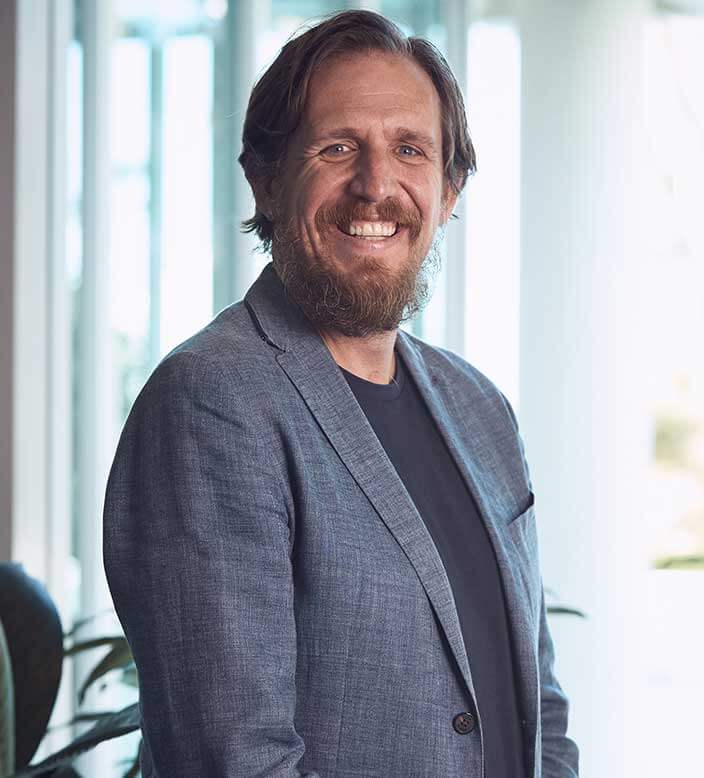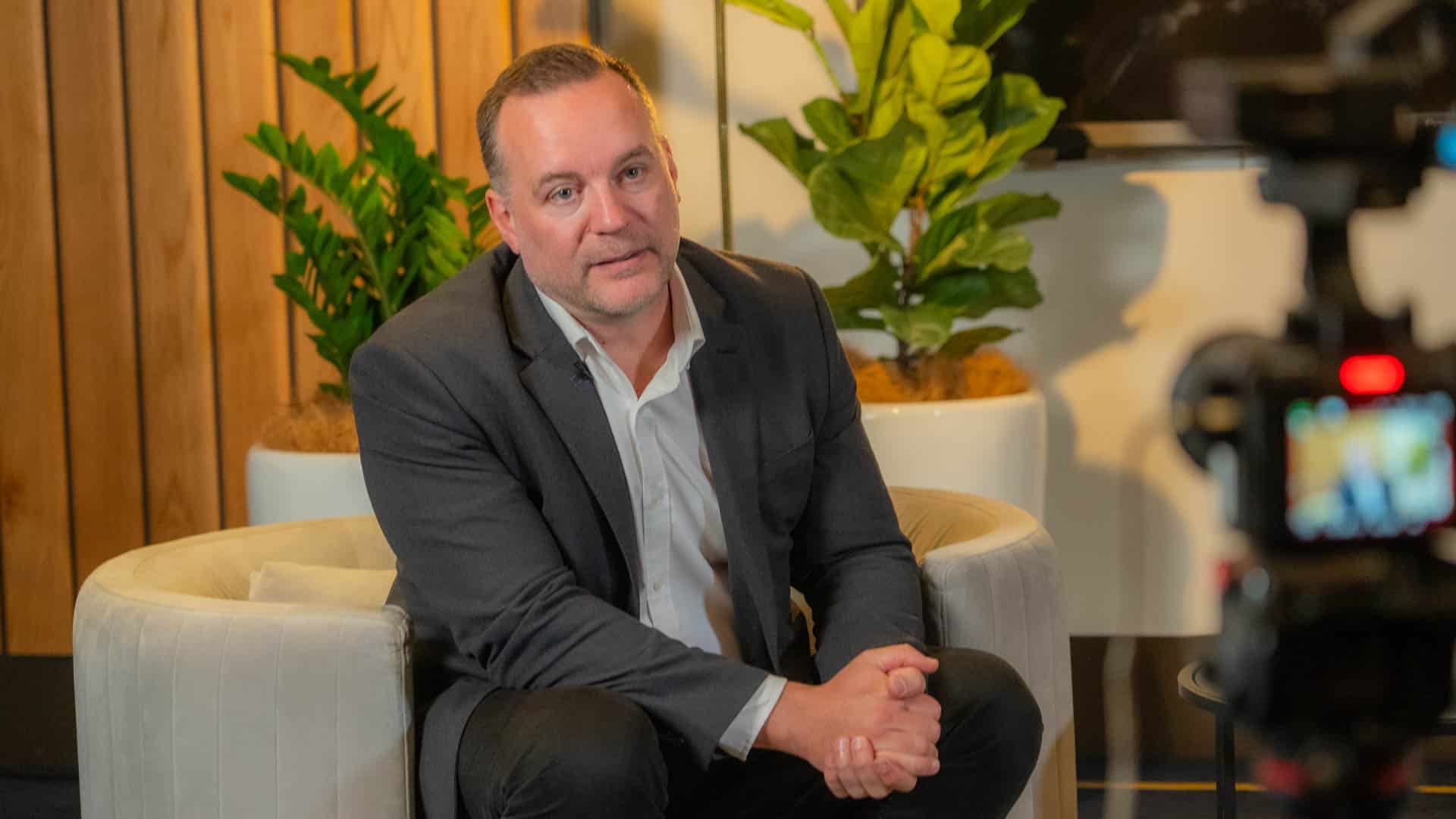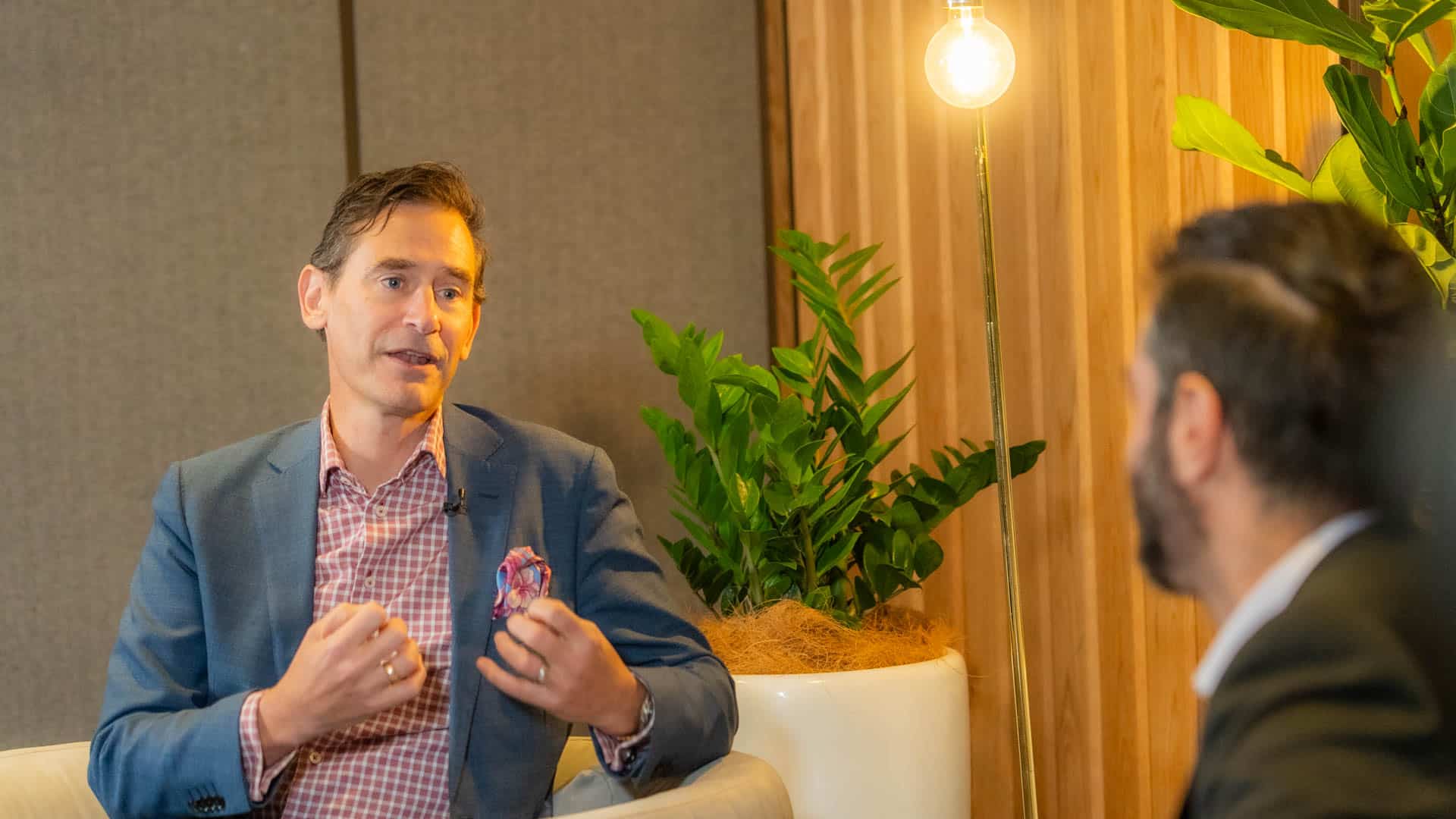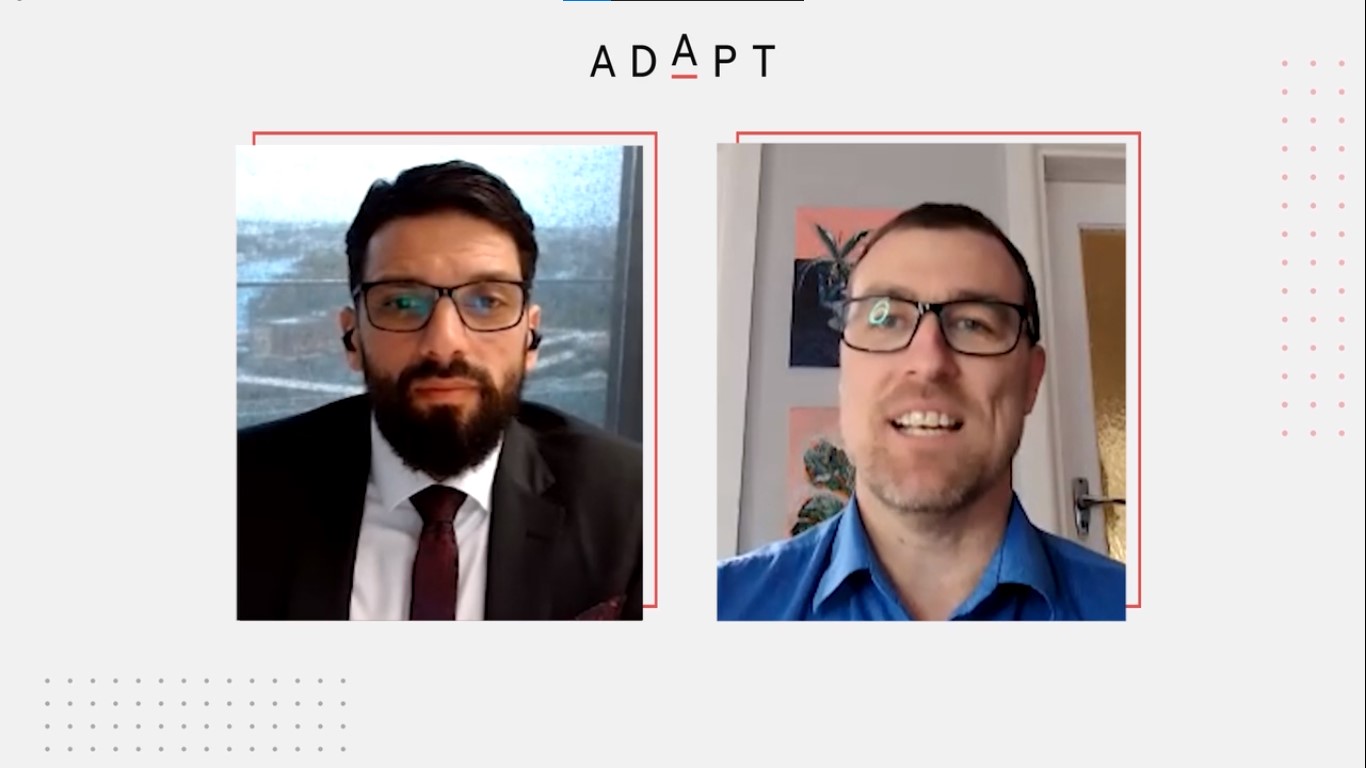Simon Waller is a speaker and consultant, and author of ‘The Digital Champion: Connecting the Dots Between People, Work and Technology’. He specialises in showing organisations how they can overcome the challenges digital technology has brought to the workplace and how their staff can be more productive and make more impact.
He speaks with Jason Donnelly, ADAPT Partner and Strategy Director, at Digital Edge about what innovation really means. How do you strike a balance between people afraid of change and those who believe it is not happening quickly enough?
Jason Donnelly:
‘Good to see you again. Thanks again for another incredible keynote here at Digital Edge, which is wonderful. So you’re talking really on why the IT department models should change. And one of the key points around there was like this your definition of innovation. So please go ahead.
Simon Waller:
First of all, I’ve got to acknowledge is not my definition of innovation, I stole it off someone, I know. I recently tried to find out who I stole it off, but I searched the internet. And I couldn’t find someone that was saying it the same way. But the simple definition or the working definition I use is innovation is just change, it creates value.
It’s that simple. When you embrace it like that, that simple definition actually gives you some really good sense of direction, because ultimately we all need to be innovative. Because if we’re not being innovative, we’re not creating value, we’re not creating change. And that’s where an environment where all our competitors and all our customers are comfortable with the status quo. Not everybody wants to change, so we must innovate. It’s almost imperative for survival.
Jason Donnelly:
So, just on that status quo journey to innovation, elaborate a little bit more on that.
Simon Waller:
It’s interesting. A lot of research has been done around organisations and how they can become more innovative, and end up breaking it down to its simplest components. There are two core parts of it.
The first part is that we need to provide an environment that supports people and enables them to be innovative. That environment is made up of things like our policies and procedures, our old structure, our culture. Do we encourage people to change and take risks and potentially fail? Or do we try and protect them and stop them from doing that? We can either have an enabling environment, or one that’s kind of restrictive.
The second part of it is our people. Do we have people who are capable and who are willing to take advantage of that opportunity or people who feel like they lack the skills and the knowledge they need and are more comfortable with the status quo? People who own the capability scale and are quite comfortable that things don’t change, because that’s their safe space. But ultimately, that’s not going to take us towards where we need to go, it’s not going to lead us towards that innovative space. That leads us obviously to the fact that we need capable people and we need an enabling environment.
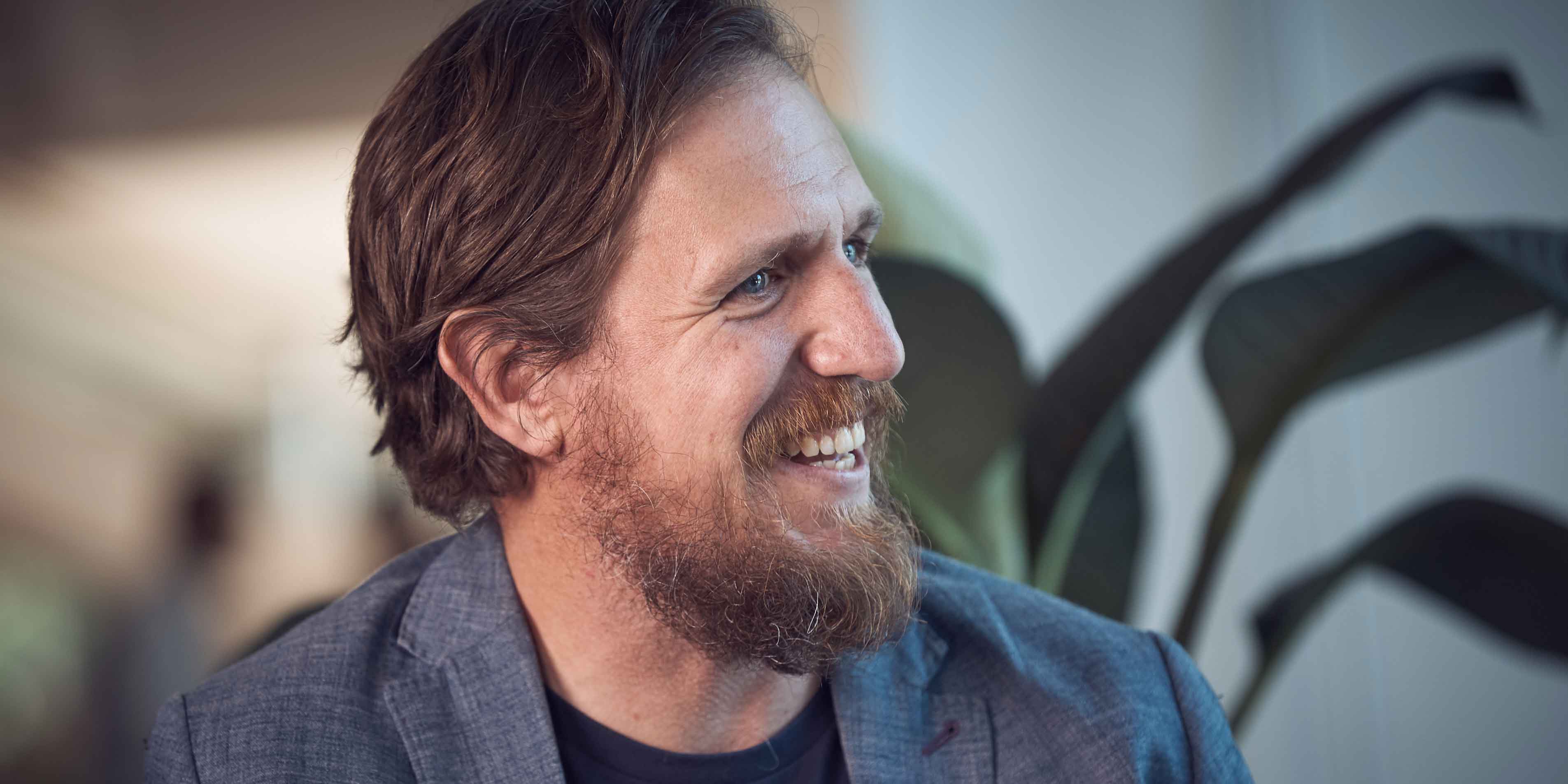
But there’s a real risk that we don’t get both. And in each case, we end up with a real challenge, probably one of the biggest challenges organisations face when it comes to digital and technology.
The first of those is that we can have people who are more capable than the environment enables. It used to be that IT skill and IT knowledge was hard to come by. Now everybody’s got it, as everybody walks around with three computers. Everybody knows how to use apps, everybody’s in charge of their own security on their home network, and sets up their devices. So we have these capable people. And yet often we ask them to operate an environment that doesn’t enable them.
When that happens, these people become frustrated. And the frustration manifests in a certain type of subversive behaviour. We talked about organisations and the concept of shadow IT. Shadow is when people do the things that they haven’t got permission to do. That’s diversity by frustrated people. They’re doing it because I just want to be effective in the job, not trying to be malicious. They’re just trying to do their job better, but that frustration is very real for them. And ultimately, it’s not just that they do things they’re not asked to do and create issues around security for our IT department, and ultimately they leave.
The research shows that people who feel that they aren’t given the technology to do the job properly are three times more likely to leave the organisation.”
So as we go through this challenge from the status quo to innovation, we’ve got those frustrated people, and then we also have their opposite, people who feel that things are changing too fast, that the environment is pushing them to change more than they’re comfortable with. And those people will actually feel overwhelmed. And just like you have with the frustrated people, and they have a set of subversive behaviour around doing things that they’re not asked to, with the overwhelmed people you have different subversive behaviour. And that behaviour is ‘I won’t do the things you’ve told me. I’ll make all the right noises when you’re looking at me, I’ll go to the training program that you made me go. But as soon as your back is turned, I’ll go back to the same old ways of doing things’. And weirdly, the effort that those people often put into that avoidance is actually much greater than it would have taken out on a limb to use the technology in the first place.
That to me is a reflection of how significant this challenge is. So we used to think that the challenges around technology, innovation and technical issues were around how we get the technology to work. But now the technology is changing faster than a lot of people are comfortable with, and trying to balance the digital needs of both the frustrated people and overwhelmed people is probably the biggest problem that organisations face in their innovation agenda.
Jason Donnelly:
There’s no real solution, no snapshot solution that can actually solve this, right? This is a continual flux of an equilibrium, right? You’ve got this wave we’re going through, and your main aim is to get out to that flat equilibrium state. So how does a company reorganisation really go about establishing this is an issue within their business? And then secondly, what’s one of the first steps to actually doing something about it?

Simon Waller:
There are a few things we can do. The biggest thing to understand is that even though it feels like these two challenges of the frustrated people and the overwhelmed people are incompatible. How do we change fast enough and slow enough at the same time? When you look at the problem more closely that’s actually not what we’re dealing with.
It’s not that the overwhelmed people don’t like change, you probably find those people are dealing with changes in their life all the time.”
It’s a particular type of change these people struggle with. The type of change we struggle with most is regular change. Especially within Western cultures, that’s what we gravitate towards. We gravitate towards these game-changing future proofing type changes, like these big digital transformations. Those types of transformations are the hardest for individuals to manage and the hardest for them to get their heads around. They are the hardest to understand and the most disruptive and disturbing, the ones that generate the most fear and the most pushback.
So instead of pursuing those types of changes, or maybe to balance out some of those bigger changes, we do need to make an environment that allows for lots of little changes, that look almost more like of a continuous improvement approach to how we use technology, as opposed to the Big Bang approach. With continuous improvement approaches, there are two things that we get. One is obviously the opportunity to improve. And we expect improvement to drive efficiency, improve competitiveness, and improve profitability.
But I think secondary to that is that each one of those little projects or improvements is actually a chance for people to learn. And it’s almost like these continuous improvement projects are micro learning opportunities. And so if we can break down and focus more on a lot of little changes, and lots of little improvements.
I think we can actually satisfy both the people who feel overwhelmed, but also potentially the people who feel frustrated. Because with the same challenge they have avenues for taking their own frustrations and getting them acted on. That still is a significant shift for organisations to make. But we are seeing it in things like Agile as a philosophy. We see within software development things like Scrum. These are processes that have been developed because we acknowledge that the old big buck Big Bang approach to developing software didn’t work.
So how do we take incremental slices and do it that way? It’s almost like saying, well, let’s just take that same philosophy and apply it to how we deliver it internally in our organisation. There are solutions, but it is going to take a whole of organisation approach and a commitment to solving them.
Jason Donnelly:
It’s a microservices approach to development, right? It’s not far away from that in a way. Rather than looking at the large outcome, you break it down into the individual services that make up that part completely.
Simon Waller:
But then as part of that, there has to be a realignment of the way it sits in the organisation. If they don’t seek Me Me, how can I engage with them to help them solve these problems? Or fix these or implement these opportunities that I’ve identified? And secondly, they don’t sit with me, how could they possibly know what I’m dealing with?
There’s a real challenge with a lot of organisations where there’s actually a separation that we’ve created between the people who have the problems and the people who have the solutions.”
So we have it people with solutions, but we create geographical diversity, so geographical gap that we put them on a different forum, a different building, and we also create language barriers. People in operations speak their language, and people in IT speak their language.
I think there’s even sometimes a risk respect gap. My experience in working with large organisations is that people who work in shared services like HR, there’s often a lack of respect for those roles, with people who have operational roles. It’s almost like you’re a necessary evil for the business, as opposed to an opportunity for me to tap into a knowledge base. And again, these all fit together, like the separation, the language it creates, and in some ways that reputation gap as well. We need to find ways of closing it, and I think one of the ways of doing is co-locating people together.
Jason Donnelly:
It’s got to come down from the top as well. If we’re all talking about being technology led companies and having the ability to deliver whatever services we need to through technology, then surely the IT department and the way that they deliver that to the business to enable and elevates them within the organisation to be the main driver.
Simon Waller:
A lot of the concepts I talked about are based on empowering people to make the change that they want to see.”
I’m a big believer in this idea of how do we tap into those frustrated people and turn them almost into citizen experts? How do we actually give them the tools, the permission, and even some resourcing to actually be leaders of change? They may not do it solo, but it might be about how do I engage with someone within the IT department to provide some specialist technical knowledge or some ideas around what types of solutions might already exist out there?
Can I actually take an active role in identifying a problem and identifying the business case for its implementation, looking at different solutions, choosing one and implementing them? And if I could do that, what if I could short circuit a process at the moment that might take months or potentially even years and do it in weeks? I think that would be a really great outcome.
























